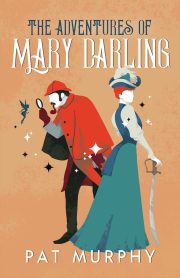The Obligatory Manuscript Format Article
Manuscript Preparation. Don’t Skip It — You WILL Learn Something
Written by John Gregory Betancourt
Everyone starting out as a writer will, sooner or later, get hit over the head by an editor over manuscript format. In short, there is a single right way to do it.
For short stories:
- In a font called “Courier”
- At a standard, easily legible size (“12 points”)
- Double spaced (between LINES, not WORDS!)
- With a 1″ margin on every side
- On one side of the paper ONLY
- With a ragged right margin (NOT fully justified)
- With your address in the upper left-hand corner of page 1
- With the word-count in the upper right-hand corner of page 1
- With the title in ALL CAPS in the exact middle of page 1
- With your byline (“by John Q. Writer”) 2 lines underneath it.
- With the story commencing 4 lines beneath that
- With future pages containing the author’s last name, the story title, and the current page number in the upper right-hand corner (“Author/STORY/2”)
For novels:
- In a font called “Courier”
- At a standard, easily legible size (“12 points”)
- Double spaced (between LINES, not WORDS!)
- With a 1″ margin on every side
- On one side of the paper ONLY
- With your address in the upper left-hand corner of page 1
- With the word-count in the upper right-hand corner of page 1
- With the title in ALL CAPS in the exact middle of page 1
- With your byline (“by John Q. Writer”) 2 lines underneath it.
- With the story commencing on page 2 (or a later page if you have dedications/quotes/acknowledgments/etc. to go at the start)
- With all pages after the first page containing the author’s last name, the story title, and the current page number in the upper right-hand corner (“Author/STORY/2”)
BUT WHY?
No, these rigid format requirements are not designed to make the writer suffer under an oppressive editor’s insane rule. Believe it or not, every one of these format requirements exists for a legitimate, sensible reason. Once you understand the “why” of all these seemingly arbitrary rules, you will probably agree that they are necessary. Let’s look at them one by one.
1. In a font called “Courier”
Courier is a fixed-width font, which means every character takes up exactly the same space on a line. It is easy to read, and most importantly, easy to use to calculate your story’s word-count accurately. Word-count is important with short stories, since most short stories are bought by the word.
IMPORTANT: WORD COUNT IS *NOT* THE EXACT NUMBER OF WORDS IN A STORY! “Word count” is, more accurately, the amount of space a story will take up when typeset. Editors conside one word to be 6 characters (5 characters plus a space). Therefore, putting a computer-generated exact word count on a ms. is not entirely helpful (though it doesn’t hurt).
2. At a standard, easily legible size (“12 points”) [ed. note: that’s 10 pitch, or pica, in typewriter terms]
Editors live by their eyes. If you make it too small, they will have trouble reading it. You want to make reading your work as painless as possible.
3. Double spaced (between LINES, not WORDS!)
Editors mark on manuscripts after they have purchased them for publication — edits, corrections, instructions to the typesetter, stuff like that. You must leave them enough room to write clearly and legibly.
And believe it or not, people have made the mistake of adding an extra space between every word, rather than between lines.
4. With a 1″ margin on every side
Again, you must leave the editor room to work.
5. On one side of the paper ONLY
The publishing industry is horribly wasteful, but everyone else only writes on the front of pages. If you write on the back, chances are good that no one will notice half your manuscript. Conform to the industry standard. If you feel guilty about those poor trees, use recycled paper.
6. With a ragged right margin (NOT fully justified)
This ties in with point #1, “Courier”. You need to leave the right marged ragged so the editor (or anyone else) can calculate the exact 6-character word count. Here is how it is done:
Pick a standard-looking page from the middle of the manuscript. Using a ruler, align it along the right edge of the text so that the ends of half the lines stick out and half are covered. Since most standard format pages contain 24 or 25 lines, you should have 12 or 13 sticking out beyond the ruler. Count characters backwards from the point where the ruler ends. Divide the total by 6. Multiply by lines on the page. (Example: 60 characters divided by 6 equals 10 words per line. Multiplied by 25 lines equals 250 words per page.) Then multiply by pages in the manuscript — adjusting for blank areas, like the half page missing on the first page. This will give you an accurate word count equivalent to what an editor will use.
7. With your address in the upper left-hand corner of page 1
You DO want the editor who wishes to purchase your story to be able to find you.
With the word-count in the upper right-hand corner of page 1
8. With the word-count in the upper right-hand corner of page 1
This is just a guide for the editor, who will perform (and pay using) his or her own word count. You can use a computer-generated true word count here, if you want.
9. With the title in ALL CAPS in the exact middle of page 1
You want the title to jump out at the reader; you don’t want him or her trying to figure out what it is.
10. With your byline (“by John Q. Writer”) 2 lines underneath it.
This is how you want your name to appear on the published story. If you use a pseudonym, put it here. Make sure your real name is on the address part; you want to be able to cash the check when it comes, and you may have trouble if it’s made out to a pseudonym.
11. With the story commencing 4 lines beneath the byline
Again, you must leave the editor enough room to work.
12. With future pages containing the author’s last name, the story title, and the current page number in the upper right-hand corner (“Author/STORY/2”)
You must identify each page of your story completely. Remember, an editor buys a lot of stories, and accidents do happen. If your story gets shuffled in with another story, dropped with a bunch of them, or otherwise mixed up, you want it to be an easy matter to sort it out.
Author name: what if someone else writes a story under the same title?
Story title: what if the editor buys 5 or 6 stories by you?
Page number: you want the story read and typeset in the proper page order!
13. For novels/books:
With the main text commencing on page 2 (or a later page if you have dedications/quotes/acknowledgments/etc. to go at the front)
You start a new chapter on a new page in books. This gives the book’s designer room to write instructions on how to start a new chapter for the typesetter.
And that’s about it for format.
ADDITIONAL NOTES!
- Don’t listen to a handful of old pros who tell you not to worry about format. I know several who deliberately don’t follow the above rules, creating headaches for editors/copyeditors/typesetters with bizarre fonts, right-justification, improper margins, etc. A word of advice: DON’T DO IT, TOO. These are established professionals; editors are willing to overlook formatting in their cases because their books sell a lot of copies. It’s simply easier to do things right. After all, when you’re starting out, you don’t want to look like a troublemaker or a rank amateur, do you?
- Lawrence Watt-Evans commented, when I workshopped this article, that he got out of the habit of using all caps (even for story titles) when one of his editors expressed his displeasure at seeing anyone use all caps anywhere in a manuscript. If you have a paying editor who likes your work and has specific format instructions (as in LWE’s case), follow them. You’re here to make money, and you never argue with a man who buys your work for real money. If someone will pay you an acceptable rate and wants your work in green crayon on toilet paper, oblige that editor! You can always change the format before you sell reprint rights to anyone else.
- Also in workshopping this article, Cecil Rose said: “I just wanted to comment about cashing checks made out to somebody else. I have refereed soccer and football in high schools and colleges, and the schools frequently get the names wrong on referee’s checks. The standard practice here is to just write “pay to the order of [your name]” on the back of the check and then sign the other guy’s name. As long as you’re depositing this check in your own account, the banks never question it. In twenty years, depositing 30-40 such checks per year, I’ve never had a problem. As long as you’re not doing it for a fraudulent purpose, I don’t think you’re breaking any law, and in practice it always works.”My reply: Some banks will question (or refuse to accept) 3rd party checks. You can probably get away with it for small amounts, but for the sake of simplicity, it’s easier to do it right in the first place!
“The Obligatory Manuscript Format Article” is Copyright © 1997 by John Gregory Betancourt. All rights reserved.
This document may be printed out and archived for personal use.
This document may be distributed free of charge by teachers or other educators for use in writing classes.
ALL OTHER USE IS STRICTLY PROHIBITED.
This article may not be reprinted, linked to, or otherwise redistributed (in its entirety or in part, via the Internet or any other means), without first obtaining the prior written consent of the author.
(No, he won’t withhold such permission unreasonably. It’s just polite to ask.)
If you wish to reprint this article in another format or medium, please email John Betancourt (wildside@wildsidepress.com) for rights availability.


